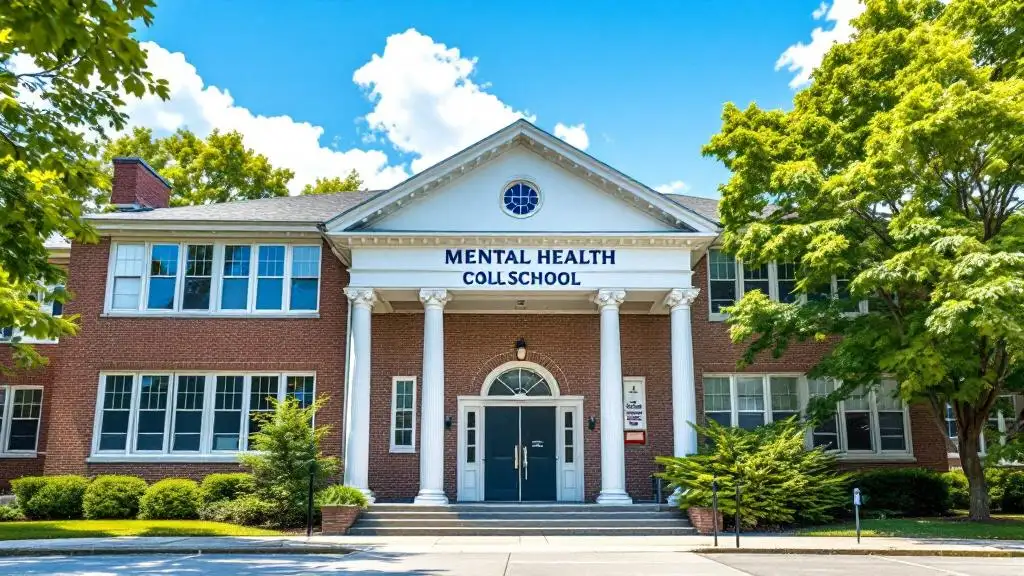The Silent Architect of Change
Trauma, often invisible yet profoundly impactful, reshapes the brain's architecture and chemistry in ways that deeply influence behavior and mental health. From early childhood experiences to adult distress, trauma activates complex biological responses that alter brain functioning, emotional regulation, and cognition. Understanding these neurobiological changes is essential for developing effective treatments for trauma-related conditions such as anxiety and depression, and highlights the critical role of comprehensive mental health services in healing and resilience.
The Biological Foundations of Trauma’s Impact on the Brain

How does trauma affect brain functioning and neurotransmitter activity?
Trauma profoundly alters how the brain functions by disrupting neurotransmitter activity and brain chemistry. Exposure to traumatic events increases stress hormones like cortisol and norepinephrine, which influence neural development and response systems. These changes affect circuits involved in learning, survival, and emotional regulation, rewiring the brain's pathways to prioritize threat detection and immediate stress responses over other cognitive processes.
What stress responses are triggered by trauma?
When a person experiences trauma, their biological stress response system activates intensely. This includes hyperarousal — a state of heightened vigilance — sleep disturbances, and intrusive memories. Trauma sets off the brain's "fight-or-flight" mechanism, leading to overactivation of the amygdala, the brain's center for processing threats, which heightens alertness to danger and contributes to anxiety and emotional dysregulation.
How does trauma change the limbic system and HPA axis?
Trauma impacts the limbic system, which governs emotions and memory, altering function in key regions like the amygdala and hippocampus. It dysregulates the hypothalamic-pituitary-adrenal (HPA) axis, the body's primary stress-response system, causing abnormal cortisol levels and heightened corticotropin-releasing factor (CRF) activity. These changes impair the body's ability to manage stress effectively and contribute to symptoms seen in trauma-related disorders such as PTSD.
In what ways is neurotransmitter regulation altered by trauma?
Neurotransmitter systems, including those involving serotonin, dopamine, and norepinephrine, are disrupted by trauma exposure. Dysregulation in these chemicals influences mood and emotional stability, often resulting in difficulties managing feelings like anxiety, anger, and sadness. These imbalances contribute to the development of trauma-related mental health conditions and can persist without intervention, emphasizing the need for targeted therapeutic approaches.
Childhood Trauma: A Critical Period for Neural Development
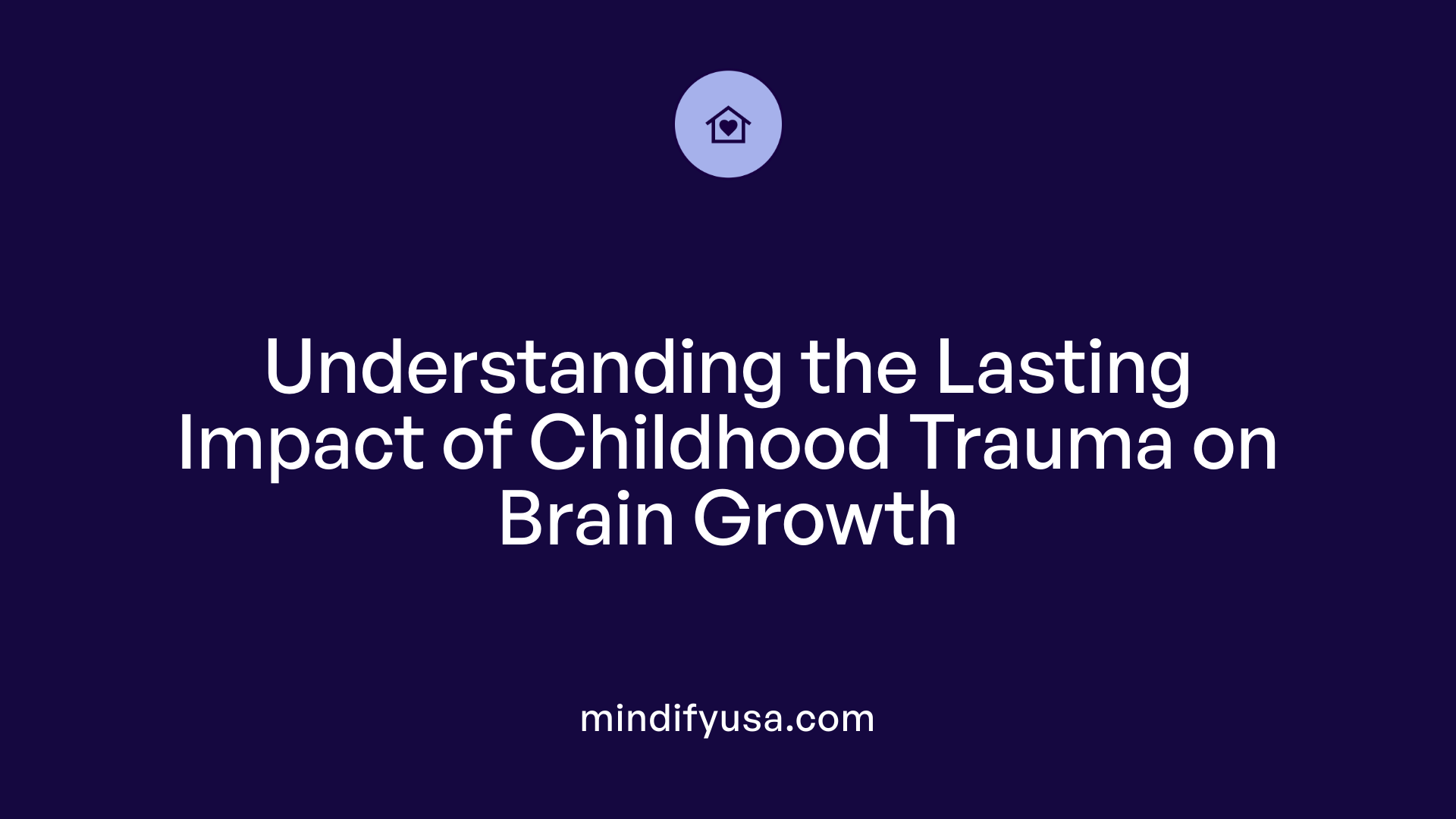
What Are Early Adverse Childhood Experiences (ACEs)?
Early adverse childhood experiences, or ACEs, refer to traumatic events occurring during childhood, such as abuse, neglect, or household dysfunction. These experiences profoundly influence the developing brain and set the stage for long-term health and psychological challenges.
How Does Childhood Trauma Impact Brain Development?
The brain undergoes rapid growth during childhood, making it particularly sensitive to environmental influences, including trauma. Childhood trauma can disrupt normal development especially in critical areas like the hippocampus, amygdala, and prefrontal cortex. For instance, trauma can cause the amygdala, which processes fear and threat, to become hyperactive, leading to increased anxiety and hypervigilance.
At the same time, trauma impairs the hippocampus involved with memory and learning, which may manifest as difficulties with memory and emotional regulation. The prefrontal cortex, responsible for decision-making and impulse control, may also be underdeveloped or less functional, reducing executive abilities such as attention and emotional modulation.
What Long-Term Neural Changes Result From Childhood Trauma?
Long-term neural alterations include changes in neural circuits that regulate emotional and impulse control. These changes may lead to emotional dysregulation, heightened stress responses, and difficulties in modulating feelings such as anger, sadness, or anxiety.
Moreover, trauma can dysregulate neurotransmitters like serotonin and dopamine, which are crucial for mood stability. The brain's stress response system, including the hypothalamic–pituitary–adrenal (HPA) axis, may become overactive due to trauma, with elevated stress hormones like cortisol further impacting neural development.
How Does Childhood Trauma Increase Vulnerability to Illnesses?
The biological stress responses triggered by early trauma increase vulnerability to a range of conditions. Children exposed to trauma show higher risks for mental illnesses such as depression, anxiety, and post-traumatic stress disorder (PTSD). They are also more susceptible to substance use disorders and physical health problems, including gastrointestinal issues and cardiovascular diseases.
This heightened vulnerability is linked both to altered brain function and the persistent effects of stress hormones on bodily systems. Early intervention can mitigate some of these outcomes by supporting neural recovery and building resilience.
Overall, childhood represents a critical window where trauma can remodel the brain's architecture, influencing emotional health and physical wellbeing across the lifespan.
Key Brain Regions Altered by Trauma and PTSD
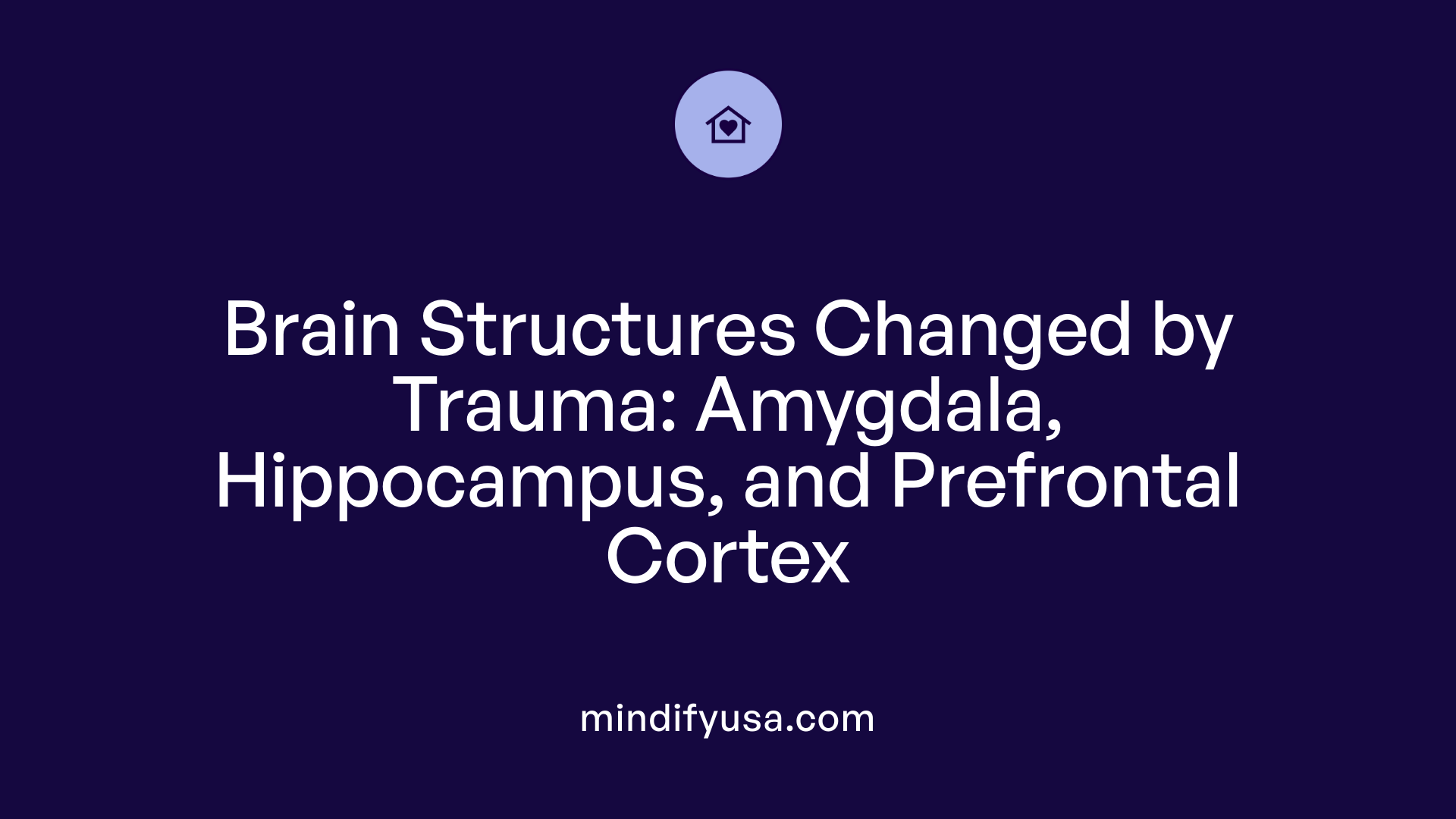
Amygdala Hyperactivity and Threat Detection
Trauma causes the amygdala, the brain's fear center, to become hyperactive. This heightened activity increases sensitivity to threats and contributes to symptoms like hypervigilance and constant alertness. In PTSD, overactivation of the amygdala leads to an exaggerated fear response, making individuals overly reactive to stimuli perceived as dangerous.
Hippocampus Size Reduction and Memory Impairments
The hippocampus, crucial for memory and learning, often shows reduced volume in people with PTSD. This shrinkage is linked to memory deficits, especially affecting verbal declarative memory. Trauma disrupts the hippocampus’s ability to organize and store memories properly, which can cause intrusive memories and flashbacks. Successful treatments may increase hippocampal volume and improve memory function.
Dysfunction of Prefrontal Cortex
The prefrontal cortex, responsible for decision-making and emotional regulation, becomes less active after trauma. Reduced function in this area impairs an individual's ability to control impulses and regulate emotions. This disruption can lead to difficulties in focusing, problem-solving, and managing stress, complicating recovery from trauma.
Changes in Salience, Default Mode, and Executive Control Networks
Trauma alters neural networks critical for processing threats and emotions. The salience network, involved in distinguishing safety from danger, shows altered activity in trauma survivors. Reduced connectivity between the hippocampus and this network impairs threat discrimination. Additionally, dysfunction in the default mode network (DMN) and executive control network (CEN) is common. Trauma can lead to increased DMN activity during emotional tasks and decreased CEN activity during goal-directed tasks, contributing to emotional reactivity, impulsivity, and stress management difficulties. People resilient to trauma often show compensatory activation in the executive control network, highlighting its role in recovery.
Behavioral and Emotional Consequences of Trauma
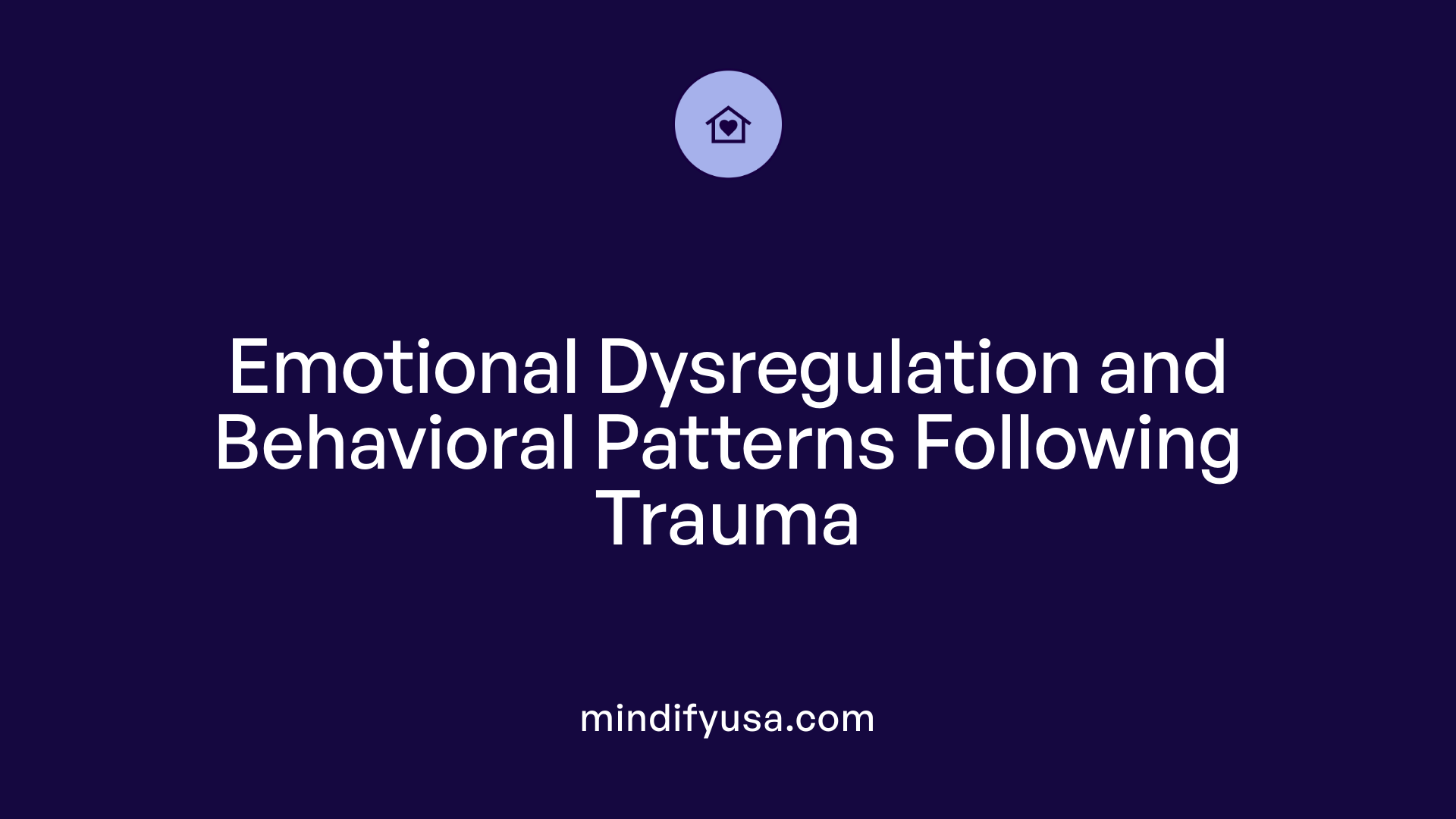
How Does Trauma Affect Emotional Regulation?
Trauma frequently leads to emotional dysregulation, where individuals struggle to manage feelings such as anger, anxiety, sadness, and shame. This difficulty in modulating emotions can make everyday interactions challenging and heightens vulnerability to mood disorders. Trauma disrupts the brain’s capacity to regulate these intense emotions, often resulting in amplified emotional responses or rapid mood changes.
What Are Common Psychological and Physiological Reactions to Trauma?
Hyperarousal is a central biological and psychological reaction to trauma and a core symptom of post-traumatic stress disorder (PTSD). Those affected may experience heightened vigilance, irritability, and an exaggerated startle response. Associated with hyperarousal are sleep disturbances, including insomnia and restless sleep, which further impair emotional resilience. Intrusive memories and flashbacks also frequently occur, causing reliving of the traumatic event that deeply disrupts psychological well-being.
What Dissociative Symptoms Can Trauma Cause?
Trauma can trigger dissociative symptoms such as depersonalization (a feeling of being detached from one’s self) and derealization (the sense that the external world is unreal). These are biological defense mechanisms designed to help the individual cope during overwhelming stress but can interfere with daily functioning when persistent.
What Trauma-Related Behaviors Are Common?
Survivors of trauma often exhibit several behavioral patterns as coping strategies or symptoms. These include:
- Avoidance: Steering clear of reminders of the trauma which can prevent healing.
- Self-harm: Engaging in behaviors that physically hurt oneself for emotional relief.
- Substance use: Using drugs or alcohol to numb distressing feelings.
- Reenactments: Unconscious repetition of trauma-related scenarios in behavior or relationships.
These behaviors can complicate recovery and affect mental health significantly if not addressed through targeted interventions.
Understanding these behavioral and emotional consequences highlights the need for trauma-informed care to support emotional regulation and reduce maladaptive responses.
Neurochemical Changes Underlying Trauma Responses
How does trauma affect cortisol and norepinephrine levels?
Trauma causes an increase in stress hormones, notably cortisol and norepinephrine. These neurochemicals play a critical role in the body's fight-or-flight stress response. Elevated cortisol helps mobilize energy but when chronically high, it can harm neural structures, especially in the brain's hippocampus, which is vital for memory and learning.
What is the role of HPA axis dysregulation in PTSD?
The hypothalamic-pituitary-adrenal (HPA) axis, a primary stress response system, becomes dysregulated in PTSD. Individuals with PTSD often show altered cortisol levels and heightened corticotropin-releasing factor (CRF) activity. This imbalance disrupts normal hormonal responses to stress and can exacerbate symptoms such as hyperarousal and emotional dysregulation.
How do neurotransmitter changes impact mood and stress after trauma?
Trauma-induced chronic stress alters neurotransmitter systems crucial for mood and stress management, including serotonin and dopamine. These changes contribute to symptoms of anxiety and depression often seen following traumatic experiences. Reduced serotonin can impair mood regulation, while dopamine disruptions affect motivation and reward processes.
What is the impact of chronic stress on serotonin and dopamine?
Prolonged exposure to trauma-related stress dysregulates serotonin and dopamine pathways, leading to diminished mood stability and impaired cognitive functions like decision-making and impulse control. These neurochemical alterations underscore the persistence of trauma's impact on mental health.
Table: Neurochemical Effects of Trauma
| Neurochemical | Changes Induced by Trauma | Associated Impact |
|---|---|---|
| Cortisol | Increased and dysregulated levels | Hippocampal damage, memory impairments |
| Norepinephrine | Elevated | Heightened arousal and hypervigilance |
| Serotonin | Decreased due to chronic stress | Anxiety, depression, mood dysregulation |
| Dopamine | Dysregulated pathways | Impaired motivation, impulsivity |
Understanding these neurochemical shifts is crucial for developing treatments targeting the biological roots of trauma-related disorders.
Cognition and Trauma: How Brain Changes Affect Thought and Perception
Distorted Beliefs About Self, Others, and the Future
Trauma can significantly alter how individuals perceive themselves and the world around them. Those affected often develop distorted beliefs, such as feelings of worthlessness, mistrust of others, or a pessimistic view of the future. These changes are linked to trauma's impact on brain areas responsible for emotional regulation and memory processing.
Memory Deficits and Disorganized Memories
Memory is particularly vulnerable to trauma, especially verbal declarative memory. Trauma survivors may experience fragmented or disorganized memories, making it difficult to distinguish past experiences from present reality. Such memory disruptions result from reductions in hippocampal volume, a region essential for organizing and storing memories.
Impaired Executive Functions
Trauma can interfere with the prefrontal cortex, impairing executive functions like decision-making, attention, and problem-solving. This impairment can lead to difficulties in focusing, controlling impulses, and making sound judgments, further complicating recovery and daily functioning.
Difficulty Discriminating Safety from Threat and Overgeneralization of Danger
Neural circuits related to threat detection, including the amygdala and salience network, become altered after trauma. This results in heightened sensitivity to perceived dangers and difficulty distinguishing safe situations from threatening ones. Such overgeneralization often contributes to anxiety and hypervigilance seen in conditions like PTSD.
These cognitive changes underscore why trauma-informed care is essential, as addressing these neural and psychological alterations can help improve mental health outcomes for trauma survivors.
Comprehensive Mental Health Services: Addressing Trauma and Related Disorders
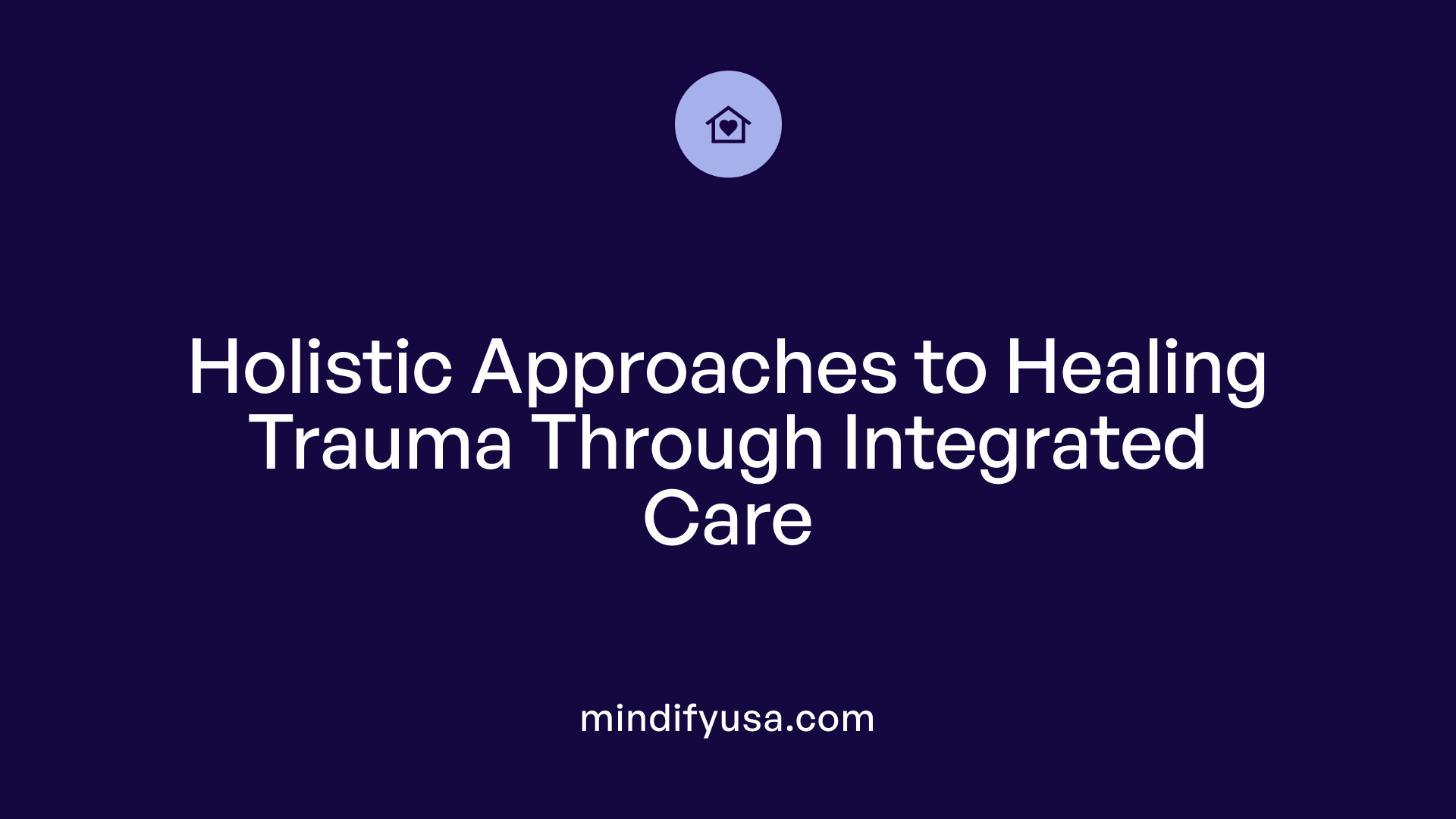
What are comprehensive mental health services?
Comprehensive mental health services encompass a broad spectrum of treatments and supports designed to enhance mental well-being and manage various mental health conditions. They integrate evidence-based therapies, medication management, community outreach, and preventive strategies to build resilience and mitigate risks. These services are provided through accessible, affordable, and coordinated networks tailored to diverse populations.
What treatment approaches are used in comprehensive mental health services?
Treatment approaches for trauma and related disorders include psychotherapy techniques like cognitive behavioral therapy (CBT), trauma-focused CBT, eye movement desensitization and reprocessing (EMDR), and prolonged exposure therapy. Medication, including antidepressants such as selective serotonin reuptake inhibitors (SSRIs) and serotonin-norepinephrine reuptake inhibitors (SNRIs), can support symptom management. Such therapies target altered brain circuits involved in fear, emotion regulation, and memory affected by trauma.
Why is early intervention and integrated care important?
Early intervention benefits trauma survivors by addressing neurobiological changes before they become deeply entrenched, particularly in developing brains. Integrated care unites mental health professionals, primary care providers, and social support networks to address the complex impacts of trauma holistically. This approach improves treatment outcomes, supports physical health, and reduces long-term disability.
What is the role of trauma-informed therapies?
Trauma-informed therapies recognize the widespread impact of trauma and prioritize safety, empowerment, and collaboration in treatment. They focus on regulating hyperarousal, improving emotional dysregulation, and reshaping maladaptive neural pathways. These therapies help individuals process trauma memories safely while fostering coping strategies to manage re-experiencing and avoidance symptoms.
How do supportive care practices help?
Supportive care practices complement formal treatments by promoting self-care and resilience. Techniques such as mindfulness meditation reduce stress and calm the brain’s alarm systems. Maintaining social support networks mitigates isolation and fosters emotional regulation. Healthy lifestyle choices—adequate sleep, physical activity, balanced nutrition, and avoiding substances—support brain health and overall recovery.
| Aspect | Description | Impact on Trauma Recovery |
|---|---|---|
| Evidence-based Therapies | CBT, EMDR, exposure therapy targeting trauma-related symptoms | Improve emotional regulation, reduce PTSD symptoms |
| Medication Management | SSRIs, SNRIs managing anxiety, depression | Normalize neurotransmitters, support memory and mood |
| Early Intervention | Timely treatment during developmental stages | Prevents deep neurobiological imprinting, enhances outcomes |
| Trauma-informed Care | Emphasis on safety and empowerment | Addresses fear circuits, reduces hyperarousal |
| Supportive Practices | Mindfulness, social support, healthy lifestyle | Calms stress response, reinforces coping mechanisms |
Treating Anxiety and Depression in Trauma Survivors
What treatments are commonly used for anxiety and depression within mental health services?
For trauma survivors struggling with anxiety and depression, treatment typically involves a combination of psychological therapies, medications, lifestyle changes, and personalized care plans.
Evidence-based psychological therapies like CBT
Cognitive-behavioral therapy (CBT) remains one of the most effective psychological treatments. It helps individuals recognize and modify negative thought patterns and behaviors stemming from trauma. Trauma-focused adaptations of CBT, such as trauma-focused CBT, integrate exposure techniques to safely process traumatic memories.
Pharmacological options such as SSRIs and SNRIs
Medications play an important role, especially antidepressants like selective serotonin reuptake inhibitors (SSRIs) and serotonin-norepinephrine reuptake inhibitors (SNRIs). These medications influence neurotransmitter systems involved in mood regulation and stress responses and can alleviate symptoms such as anxiety, depression, and hyperarousal associated with trauma. Although no drugs are specifically FDA-approved for PTSD, these are commonly prescribed to manage symptoms.
Use of trauma-focused therapies like EMDR and exposure therapy
Trauma-focused therapies including Eye Movement Desensitization and Reprocessing (EMDR) and prolonged exposure therapy specifically address the processing of traumatic memories and reduce associated distress. These therapies have been shown to help reduce symptoms of anxiety and depression by targeting dysfunctional fear circuits altered by trauma.
Lifestyle and self-care recommendations
Self-care practices complement formal treatments. Recommendations include engaging in regular physical activity, maintaining a healthy diet, ensuring sufficient restful sleep, practicing mindfulness or relaxation techniques, and fostering social support networks. Avoiding substance misuse is critical due to its potential to worsen symptoms.
Tailoring treatment to individual needs and symptom severity
Because trauma impacts brain function and mental health differently across individuals, treatment plans must be personalized. Severity of symptoms, co-occurring conditions, developmental stage at trauma exposure, and resilience factors are considered to optimize outcomes. Early intervention enhances prognosis, with many individuals experiencing symptom reduction or recovery through comprehensive, integrated care.
These multifaceted treatment approaches support trauma survivors in managing anxiety and depression, promoting healing at biological, psychological, and social levels.
The Path to Resilience: Brain Adaptation and Recovery from Trauma
How Does the Brain Compensate Following Trauma?
Research shows that individuals exposed to trauma who avoid developing disorders like PTSD often display increased activation of the brain's executive control network. This compensatory mechanism enhances cognitive control, helping to regulate emotions and stress responses. Strengthening this network supports resilience by counterbalancing hyperactive fear and threat detection systems.
Can Antidepressants Promote Recovery by Stimulating Neurogenesis?
Antidepressant medications, particularly selective serotonin reuptake inhibitors (SSRIs), have been found to promote neurogenesis in the hippocampus. This growth of new neurons may help restore memory function and emotional regulation impaired by trauma. Such neurogenesis is considered crucial in reversing some neurobiological effects of stress.
What Role Does Psychotherapy Play in Rewiring Fear Circuits?
Psychotherapy, including cognitive behavioral therapy (CBT) and trauma-focused approaches like EMDR and prolonged exposure therapy, targets dysfunctional fear circuits. By repeatedly processing traumatic memories in a safe context, therapy decreases amygdala hyperactivity and enhances prefrontal cortex function, improving the brain's ability to discriminate safety from threat.
How Does Storytelling and Expression Aid in Healing?
Expressing trauma through storytelling, writing, or talking activates brain regions that help calm the alarm system. This practice reduces physical tension and promotes a sense of control. It engages cognitive and emotional processing, facilitating integration of traumatic memories and supporting emotional regulation.
What Is the Outlook for Individuals Undergoing Treatment?
The prognosis for trauma-related disorders varies widely. Approximately 30% of trauma survivors recover completely, and another 40% experience significant symptom improvement with treatment. Early intervention, combined with psychotherapy, medication, and self-care strategies like mindfulness and social support, fosters better recovery outcomes.
| Aspect | Mechanism/Intervention | Impact on Recovery |
|---|---|---|
| Executive Control Network | Increased activation in resilient brains | Enhances emotion regulation and stress response control |
| Neurogenesis | Stimulated by antidepressants | Restores hippocampal function and memory |
| Psychotherapy | Cognitive behavioral and trauma-focused | Rewires fear circuits, decreases amygdala overactivity |
| Storytelling and Expression | Narrative-based processing | Calms brain alarms, reduces tension, fosters control |
| Treatment Prognosis | Early and comprehensive interventions | Up to 70% experience full or partial recovery |
Embracing a Trauma-Informed Approach to Mental Health
The profound impact of trauma on brain chemistry and behavior underscores the necessity of trauma-informed mental health services. By recognizing the complex neurobiological and psychological alterations caused by traumatic experiences, health providers can tailor interventions that address emotional dysregulation, cognitive distortions, and physiological stress responses. Comprehensive mental health care - integrating therapy, medication, early intervention, and supportive lifestyle strategies - offers hope for recovery and resilience. Ultimately, fostering understanding and compassion for trauma survivors is critical for breaking cycles of distress and building healthier communities through informed care and continuous research.
References
- Understanding the Impact of Trauma - NCBI
- Researchers reveal how trauma changes the brain
- Traumatic stress: effects on the brain - PMC
- PTSD (Post-Traumatic Stress Disorder)
- How Trauma Affects the Brain
- How Trauma Can Negatively Impact the Brain - Harmony
- 5 Ways Trauma Changes Your Brain and Body (And How ...
- How Childhood Trauma Can Impact the Brain











